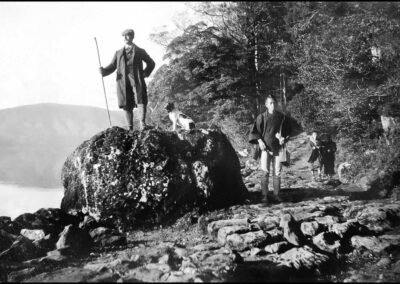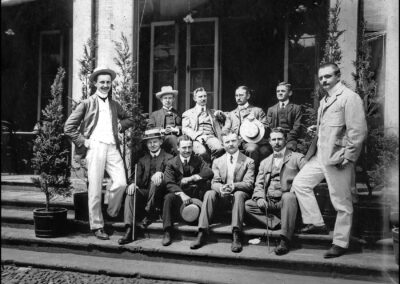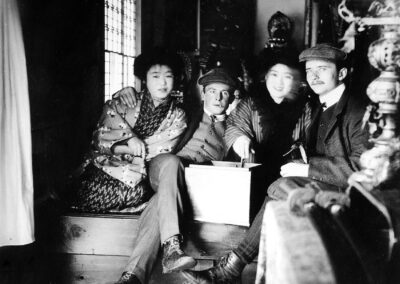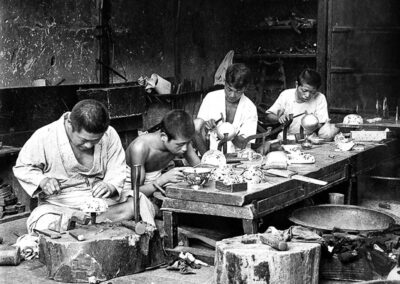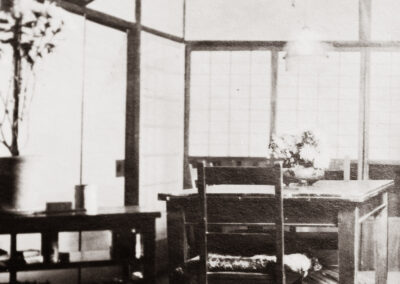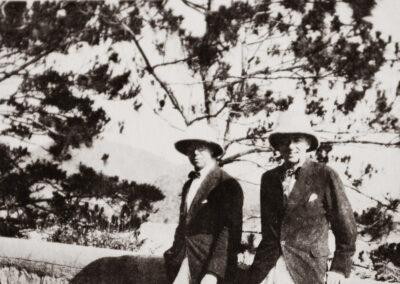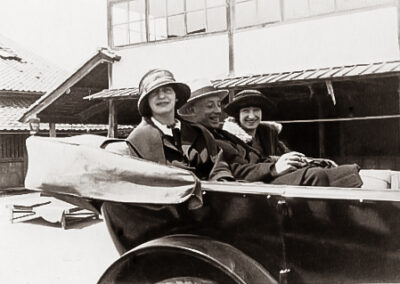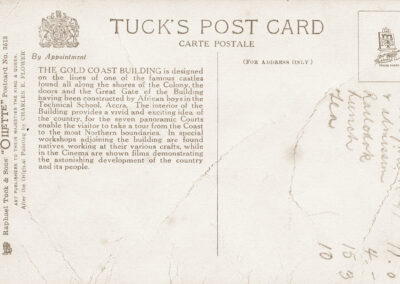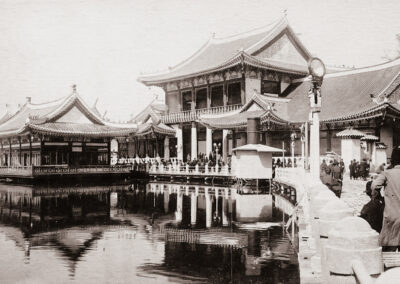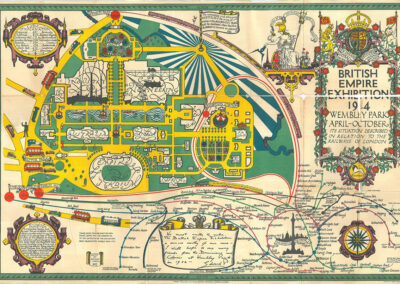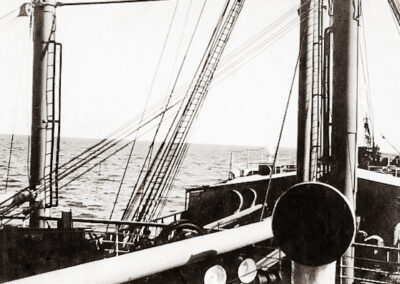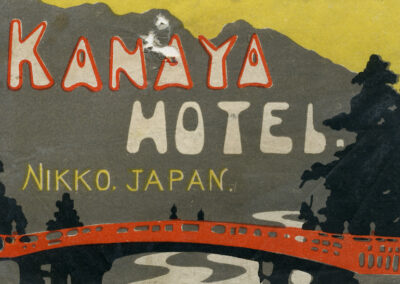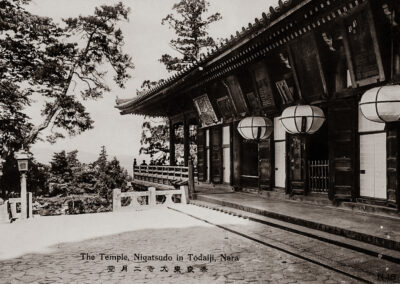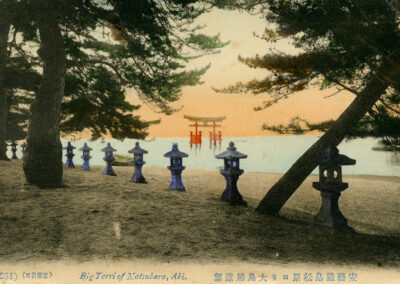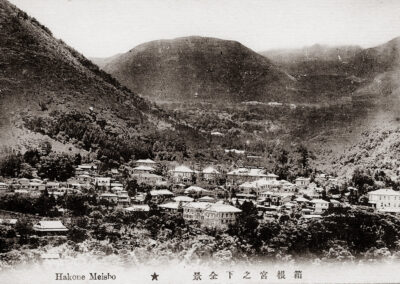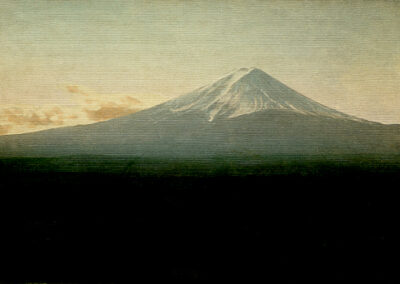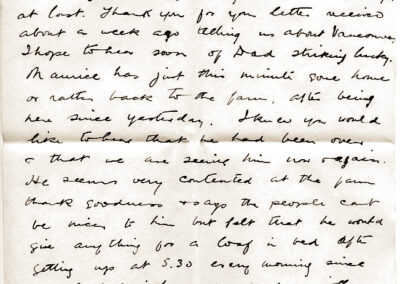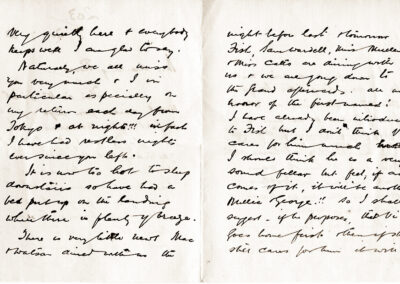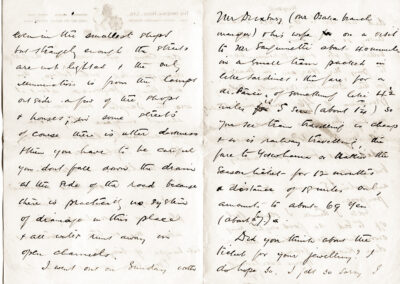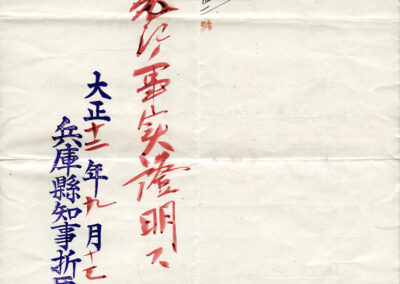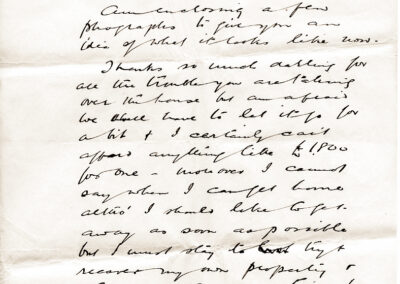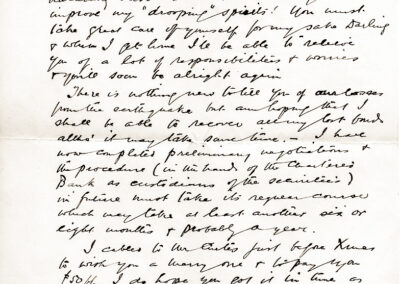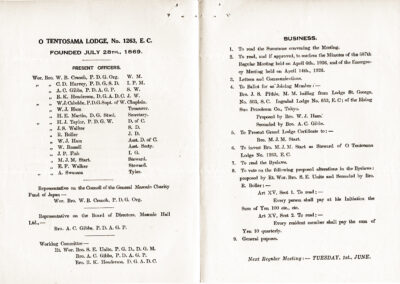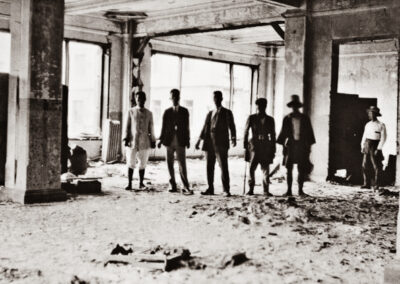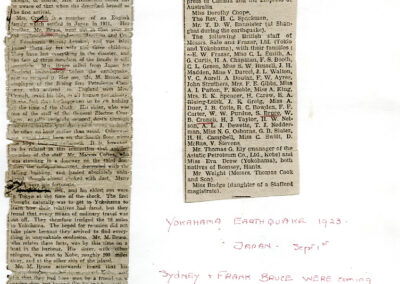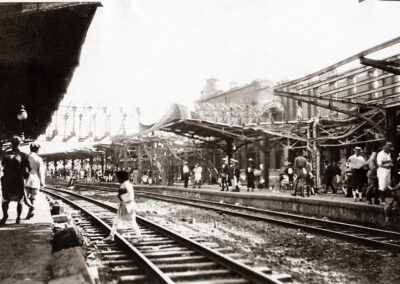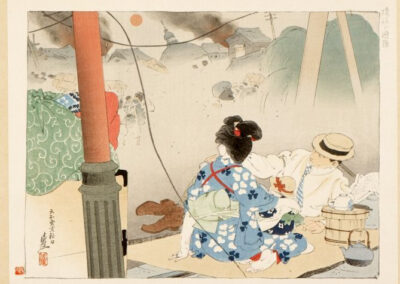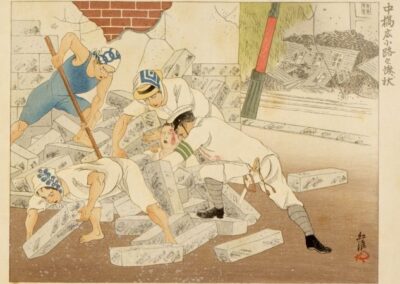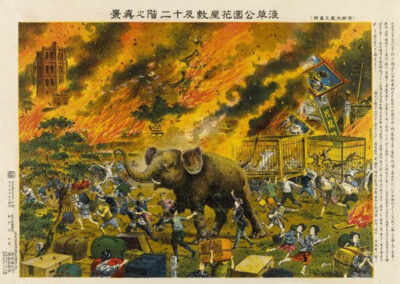
Archive Japan: 1910-1924
Geography & Demography
Japan is an archipelago of 6852 islands stretching over 3000 km (1900 mi) along the Pacific coast of East Asia. It is narrow (no point in Japan is more than 150 km or 91 miles from the sea) and mountainous. Its 126 million people (2019) must make do with the small percentage of habitable land in the valleys and coastal plains. Thus, Japan’s cities are densely populated. Unfortunately, Japan sits on colliding tectonic plates which cause continuous volcanic activity — both volcanic eruptions and earthquakes.
This portion of the Origins Far East archive contains all the pictures, documents and letters in my family’s possession, gathered from the period 1910-1923, when my grandfather Sydney Bruce worked in Yokohama. His wife Rose Mary and their five children came for extended stays from England every several years and Sydney as well, took extended stays back in England. It all came to a horrific halt when a massive earthquake hit Tokyo and Yokohama on September 1, 1923. Please see ‘Tales’ for more.
The Ex-Pat’s Life
The Ex-Pat’s Life
Being an ex-pat was not for the weak of heart, body or mind. It challenged all three, particularly when children were involved.
Japanese Life — Images from the Net
In varying degrees, the Bruces engaged with Japanese and Japanese culture, although the vast majority of their socializing was done within the ex-pat community. Nonetheless, Rose Mary, in particular, took great interest in the plants and culture of Japan and engaged with the Japanese through her teachings in English and piano. My father, as well, valued Japanese culture. Decades later, when I was a young boy, Frank could be seen gardening in nothing but a wrap, Japanese style, to the great amusement of our neighbours. With little success, he attempted to teach his children a few expressions of Japanese.
The Bruces In Japan
In varying degrees, the Bruces engaged with Japanese and Japanese culture, although the vast majority of their socializing was done within the ex-pat community. Nonetheless, Rose Mary, in particular, took great interest in the plants and culture of Japan and engaged with the Japanese through her teachings in English and piano. My father, as well, valued Japanese culture. Decades later, when I was a young boy, Frank could be seen gardening in nothing but a wrap, Japanese style, to the great amusement of our neighbours. With little success, he attempted to teach his children a few expressions of Japanese.
Peace Exposition
These postcards on the Peace Commemorative Exposition, Ueno Park, Tokyo, 1922 have a connection to family. Ernest Bruce, Sidney’s brother, worked for Canadian Pacific Railway as its Director of Exhibitions. He and his wife lived in Montreal, but Ernest, by the nature of his work, travelled all over the world creating and setting up displays promoting the merits of coming to Canada. Thus, when the Peace Exposition came to Tokyo, Ernest was there and most certainly visited the Bruces. Ernest (1876-1927) died childless on a train to New York City.
Voyages
The Bruce family kept two households, one in Yokohama, the other in South London. This awkward arrangement was deemed necessary to allow the children to get an education in England. Every several years, the family travelled to Japan or Sydney travelled to England for an extended stay. There were no airplanes, of course, so it took travellers over 30 days to get from Yokohama to London and was a similar duration to get back to Japan. The expense was considerable.
Postcards
Rose Mary Caldwell (1872-1954)
Nullam non quam nec velit auctor lobortis. Vestibulum faucibus lectus et libero euismod, sed efficitur odio sodales. Nullam tristique lorem sit amet facilisis congue. Cras id velit purus. Fusce non tincidunt nunc, quis sodales ex. In laoreet, arcu quis varius iaculis, metus libero sollicitudin risus, eget volutpat erat diam ac nulla. Suspendisse non fermentum ante, at eleifend sapien. Nullam in est eget enim consequat sodales non ut dolor.
Rose Mary Caldwell: Portraits
Rose Mary Caldwell: Letters & Docs
Irene (Renie) Millicent Bruce (1898-1988)
Nullam non quam nec velit auctor lobortis. Vestibulum faucibus lectus et libero euismod, sed efficitur odio sodales. Nullam tristique lorem sit amet facilisis congue. Cras id velit purus. Fusce non tincidunt nunc, quis sodales ex. In laoreet, arcu quis varius iaculis, metus libero sollicitudin risus, eget volutpat erat diam ac nulla. Suspendisse non fermentum ante, at eleifend sapien. Nullam in est eget enim consequat sodales non ut dolor.
Irene Bruce: Portraits
Irene Bruce: Letters & Docs
Sidney Frank Bruce (1899-1970)
Nullam non quam nec velit auctor lobortis. Vestibulum faucibus lectus et libero euismod, sed efficitur odio sodales. Nullam tristique lorem sit amet facilisis congue. Cras id velit purus. Fusce non tincidunt nunc, quis sodales ex. In laoreet, arcu quis varius iaculis, metus libero sollicitudin risus, eget volutpat erat diam ac nulla. Suspendisse non fermentum ante, at eleifend sapien. Nullam in est eget enim consequat sodales non ut dolor.
Sydney Frank Bruce: Portraits
S Frank Bruce: Letters & Docs 1
S Frank Bruce :Art
S Frank Bruce Art: Britannia
S Frank Bruce Art: General
Sydney Bruce: Letters & Docs
Sydney Bruce: Letters & Docs
Sydney Bruce: Letters & Docs 3
Sydney Bruce: Letters & Docs 4
Archive: Japan
The Bruce Family: 1910-1923Earthquake!
September 1, 1923 was a typical day for residents of Yokohama. It was a workday. As noon approached hibachis were underway preparing the mid-day meal. The markets were busy with shoppers. My family was engaged with various commitments. Sydney and Frank were on a train returning to Yokohama from Tokyo. Vi had taken the day off work and was driving to the train station to pick up Sydney and Frank. They’d be arriving soon. Maurice and Aunt Eva, Sydney’s sister, were standing on the dock seeing a friend off on the HMS Australia. Renie (Irene) was in England. She was the oldest offspring and had married several years earlier. Rose Mary and young Geoffrey had returned to England a month earlier.
At two minutes to noon it struck. Hibachis went flying, buildings collapsed, a typhoon swept in from the sea bringing with it a tidal wave which swept the coast clean of houses, people and vehicles. The hibachis started fires, everywhere. Soon, the entire city was a blazing inferno. Yokohama, the jewel of western thought and culture, Japan’s major trading port, was no more and 140,000 people had lost their lives. Please see Tales for more.
Earthquake Art
Art has always been a way for human beings to express their feelings, share moments of happiness, expunge fears, sadness and anger, The Great Kanto Earthquake would have elicited all such emotions. Some expressed them through their art.



